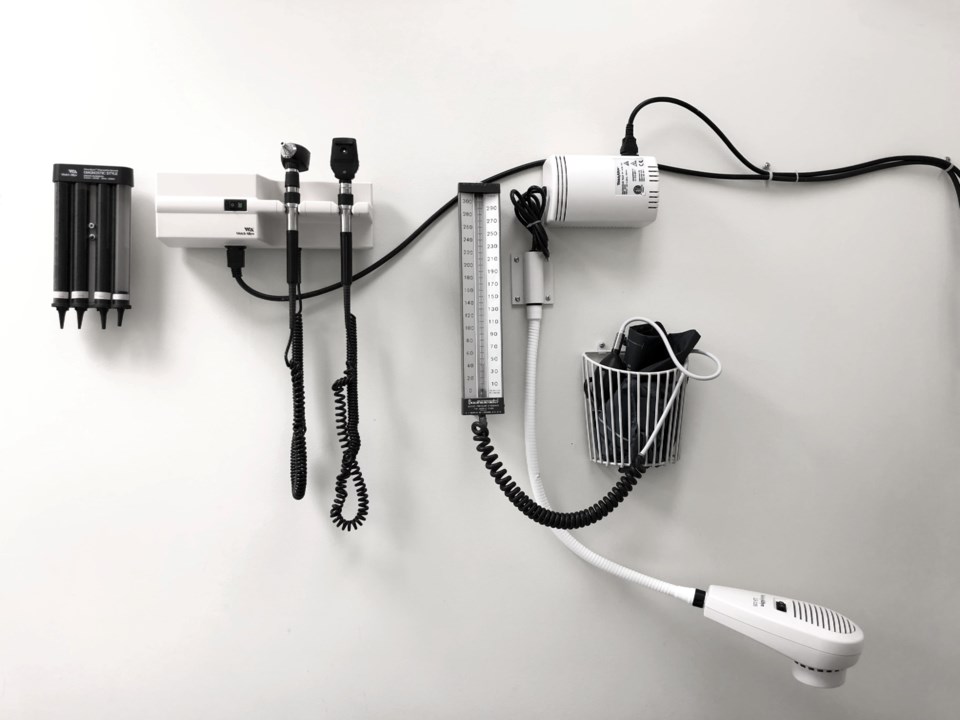The group representing Ontario's doctors says people in the North aren't getting the care they need.
Northern Ontario residents fare worse than the rest of the province in health outcomes, life expectancy and access to care, Ontario Medical Association president Dr. Dominik Nowak said in a press conference on Tuesday.
For kids in Kenora, the closest pediatric centre with ICU beds is in London, said Sarah Giles, a rural generalist physician and assistant professor of family medicine at the Northern Ontario School of Medicine University.
"Imagine you're a parent and your child is critically ill. And you have to fly around the province to get to be with them — or maybe to get home at the end of it, with a sick kid, when you're exhausted. It's just not right," she said.
Expectant mothers in the North often have to travel to bigger communities to give birth, leaving their family and friends to live in an Airbnb or hotel at an average cost of around $5,000, said Jessica Kwapis, a general surgeon in Kapuskasing.
"Imagine risking your life to travel to a location where your baby can be born, or worse, not being able to travel because the roads are closed due to snowstorms or other weather events," she said.
Last year, the only obstetrics provider in Hearst, three hours from Timmins, stopped delivering babies, leaving the community with no options, she said.
Her obstetrics program in Kapuskasing, an hour east of Hearst, is barely hanging on, she said.
"We have faced shortages of nurses, anesthetists, surgeons and family physicians providing obstetrics services," Kwapis said.
Her practice was on track to open its doors for deliveries, but those plans are on hold after losing another family doctor.
Access issues in the North affect urban areas, because the worse things are in rural Ontario, the more doctors have to send patients to cities and take up beds there, Giles said.
"Furthermore, the cost to the system for moving patients is huge," she added.
The Ford government's approach isn't cutting it, Giles said.
"The current plan is sort of like, 'Let's throw a bit of money and some open spots in medical school and hope it all comes out in the wash.' It is not working," she said, adding that emergency room coverage is "exceptionally short."
"When I look at the schedule for the holidays, I have palpitations," she said. "We just can't do it anymore. We are exhausted."
The Ontario Medical Association is calling for the provincial government to create a workforce strategy for rural and northern Ontario, including a "coordination centre" that would help communities recruit and retain doctors, Nowak said.
The province also needs to make it easier for doctors to cover for each other in the North through "regional credentialing" — allowing physicians to easily get privileges in different health-care settings, Nowak said.
Northern doctors also need more training to support the "Swiss Army Knife" approach to rural generalism, he said.
Nowak contrasted the requests with the current "Hunger Games" system where communities compete with each other to attract doctors, often with financial incentives, in what has been described as a race to the bottom.
Municipalities might be able to get doctors there with higher pay, but they won't stay if they're constantly stressed out, Giles said.
"It's helping the people who are in the communities have a reasonable work-life balance and not feel like the weight of the world is sitting on them," she said.
Kwapis said she's proposed a different obstetrics funding model to the Ministry of Health, and has a call with the ministry next week.
"This has to happen immediately, because the lives of our moms and babies depend on it," she said.
In question period on Tuesday, Health Minister Sylvia Jones defended her government's record on ER closures.
"So, July and August of this year, 99 per cent of Ontario ERs remained open. We’ve actually seen progress being made because we have worked very closely with our hospital partners," she said in response to a question from Liberal MPP Mary-Margaret McMahon.
Jones needled Liberal Leader Bonnie Crombie for saying the Kathleen Wynne government spent too much on health care.
"We are investing 31 per cent more than the previous Liberal government did in our health care system because, frankly, it was ignored for 15 years under that government," she said.




